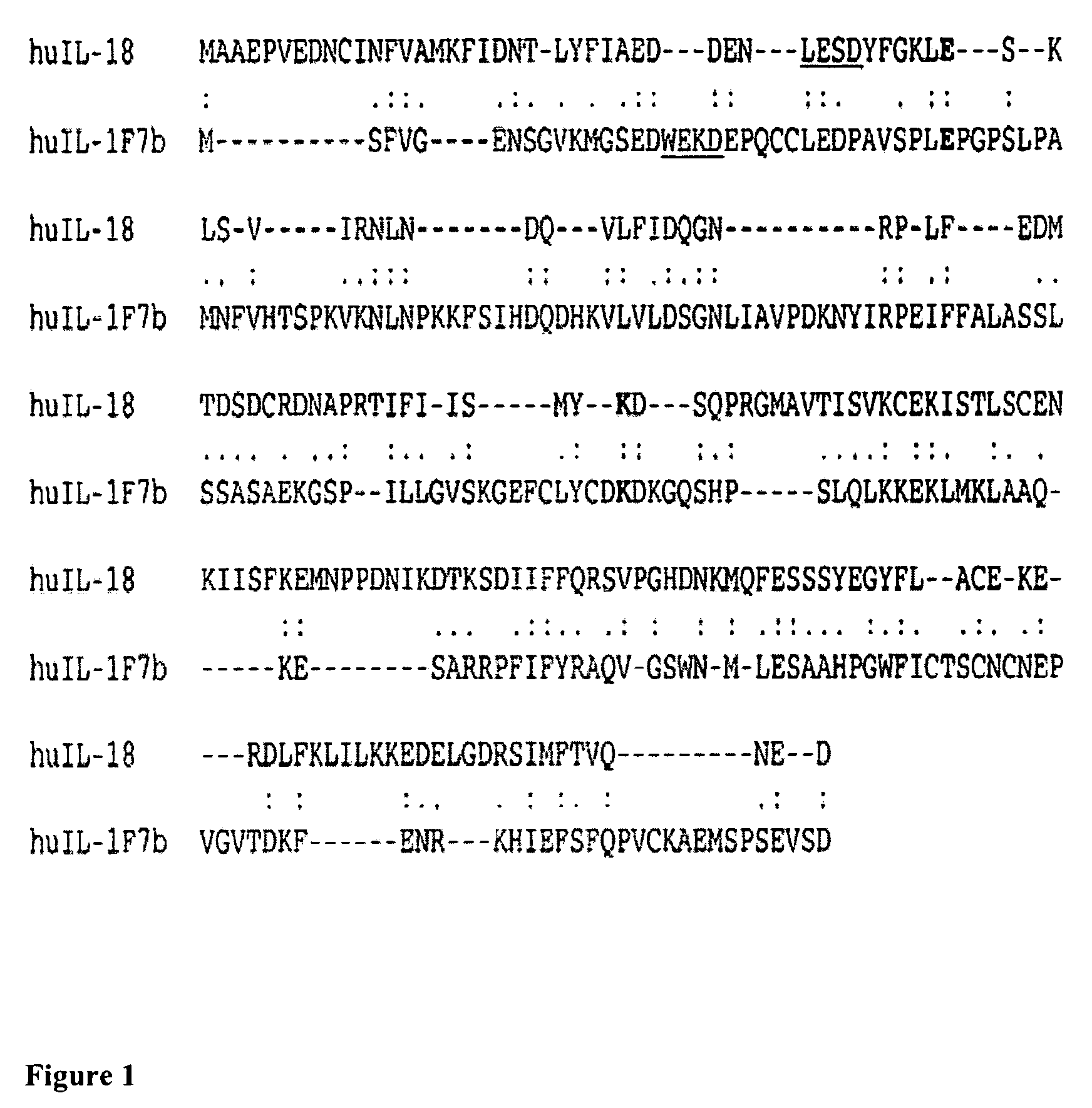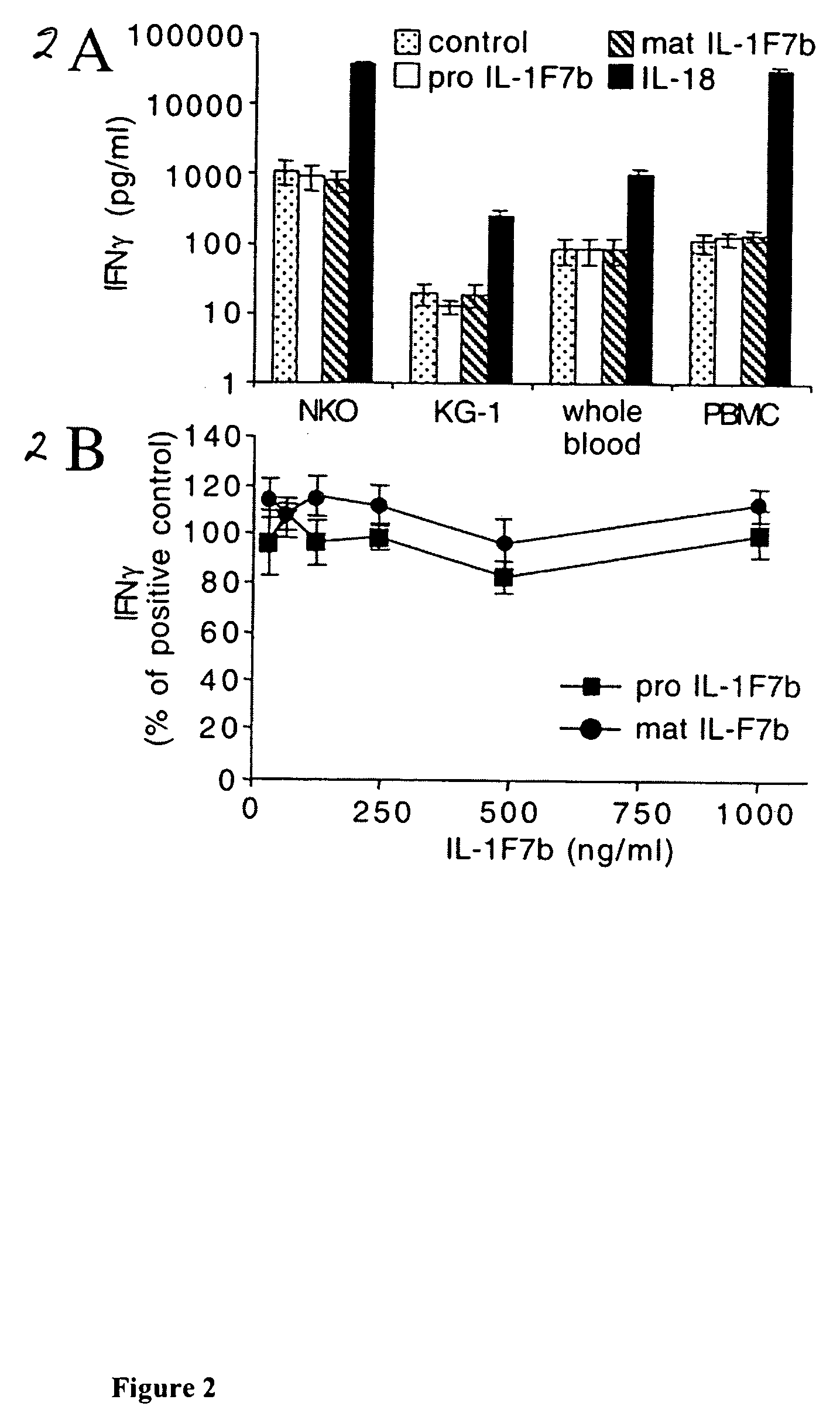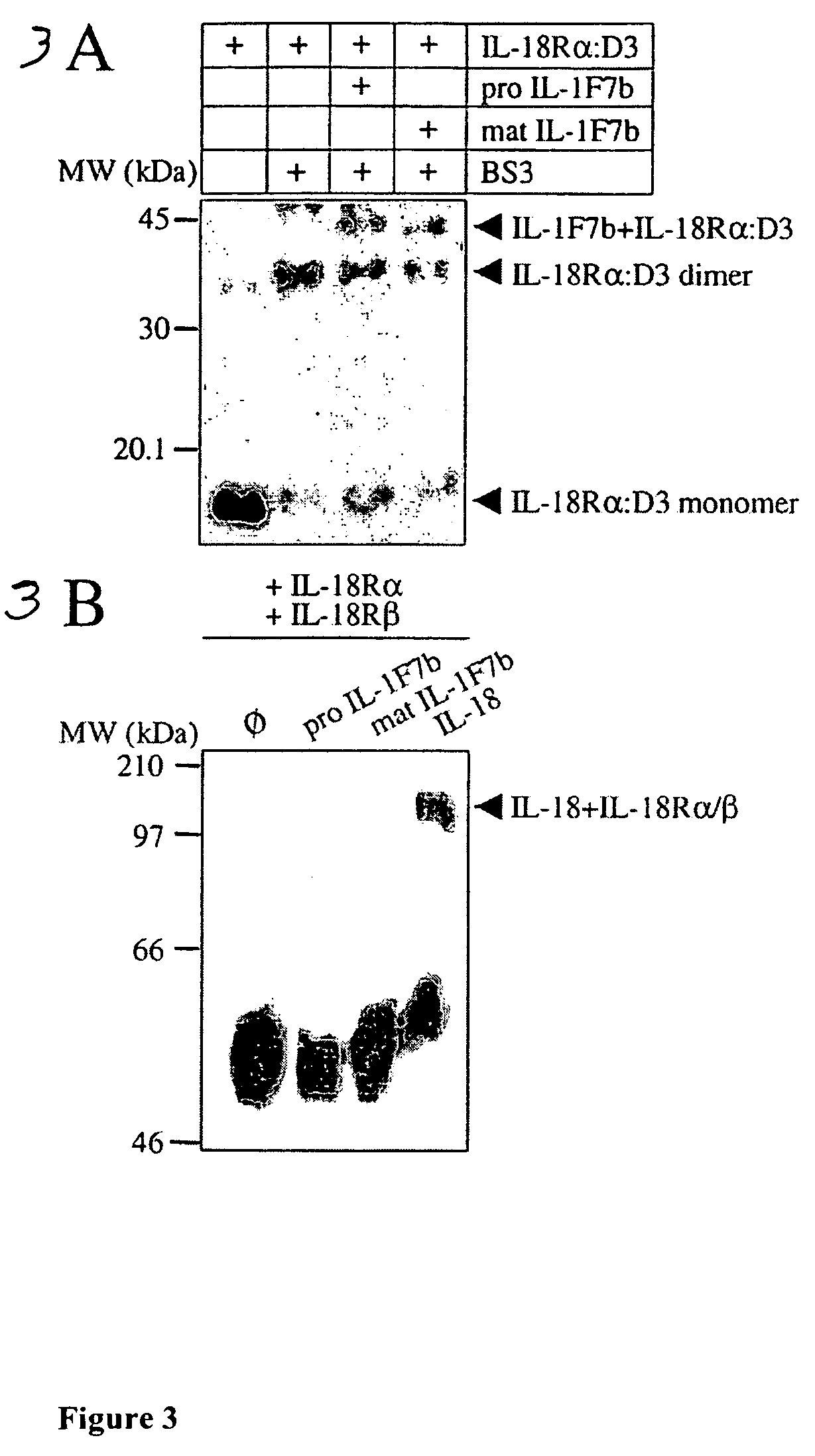Method of treatment using a cytokine able to bind IL-18BP to inhibit the activity of a second cytokine
a cytokine and activity technology, applied in the field of treatment using a cytokine able to bind il-18bp to inhibit the activity of a second cytokine, can solve the problems of unelucidated mechanism of the multi-functional factor il-18 in the development of liver injury, unsatisfactory effects of the first response, and inability to treat or prevent a disease, etc., to achieve the effect of inhibiting the activity of cytokine-2, preventing the formation of cytokin
- Summary
- Abstract
- Description
- Claims
- Application Information
AI Technical Summary
Benefits of technology
Problems solved by technology
Method used
Image
Examples
example 1
The Effect of IL-1F7b on Stimulation of IFNγ Production
[0123]Based on the reported binding of IL-1F7b to the IL-18Rα chain (Pan 2001, Kumar 2002), experiments were designed to evaluate whether IL-1F7b, like IL-18, upon binding to the IL-18α receptor stimulates IFNγ production in cells. Both, the full-length molecule (pro IL-1F7b) or the mature molecule (mature IL-1F7b) using E21 as N-terminus at the predicted ICE-cleavage site (see FIG. 1), were used in the following experiments. Human NKO cells (Kim 2000), cultures of whole human blood, peripheral blood mononuclear cells (PBMC) (co-stimulated with IL-12 from Preprotech at 1 ng / ml) (PBMC for preparation see Example 8) or KG-1 cells (co-stimulated with TNFα at 10 ng / ml) (the line was obtained from ATCC Rockville, Md.), were stimulated with 100 ng / ml of recombinant IL-1F7b (pro or mature form Example 5) or IL-18. IFNγ was measured (by the liquid-phase electrochemiluminescence (ECL) in Puren 1998) in the conditioned medium of the cells...
example 2
Characterization of the Binding of IL-1F7b to the IL-18 Receptor
[0127]It has been reported that IL-18 binds to the IL-18Rα via the third extracellular domain (IL-18Rα: D3) (Azam 2002). In order to characterize the binding of IL-1F7b to IL-18Rα, the third extracellular domain CD3) of the IL-18Rα was individually expressed in E. coli as his6 tagged protein and purified via Talon-affinity chromatography. Then, IL-1F7b was incubated with such purified IL-18Rα: D3 and chemically cross-linked (Example 7). As shown in FIG. 3A, SDS-PAGE and Western blotting analysis revealed a complex of 43 kDa corresponding to cross-linked IL-1F7b and the IL-18Rα: D3. Cross-linking to IL-18Rα was observed both in pro or mature IL-1F7b. These results suggest that the IL-18Rα: D3 is crucial for binding to IL-1F7b, the very same domain that was previously demonstrated to be important for binding to IL-18.
[0128]Upon binding of IL-18 to IL-18Rα the IL-18Rβ is recruited and an active ternary complex is formed: I...
example 3
Binding of IL-1F7b to IL-18BP
[0130]The amino acid sequence of IL-18 and IL-1F7b were compared. As shown in FIG. 1, IL-1F7b shares with IL-18 two amino acids, which are conserved in the latter, E42 and K89. E42 and K89 have been shown to be critical for the activity of IL-18 and for binding IL-18BP (Novick 1999). Thus, based on the sequence similarity of IL-1F7b with IL-18, the possibility that IL-1F7b binds to IL-18BP was investigated.
[0131]IL-1F7b (pro or mature 1.5 μg) or IL-18 (1.5 μg) were incubated in the presence or in the absence of IL-18BP and subjected to the cross-linker reagent BS3 (Example 7). Two control groups were prepared each containing the IL-18BP protein alone, one control group incubated in the presence and the other in the absence of the cross linker agent BS3. The proteins were resolved on 10% SDS-PAGE under reducing conditions and blotted on nitrocellulose. Proteins were detected on the blots using polyclonal antibodies specific to IL-1F7b or to IL-18. The res...
PUM
 Login to View More
Login to View More Abstract
Description
Claims
Application Information
 Login to View More
Login to View More - R&D
- Intellectual Property
- Life Sciences
- Materials
- Tech Scout
- Unparalleled Data Quality
- Higher Quality Content
- 60% Fewer Hallucinations
Browse by: Latest US Patents, China's latest patents, Technical Efficacy Thesaurus, Application Domain, Technology Topic, Popular Technical Reports.
© 2025 PatSnap. All rights reserved.Legal|Privacy policy|Modern Slavery Act Transparency Statement|Sitemap|About US| Contact US: help@patsnap.com



